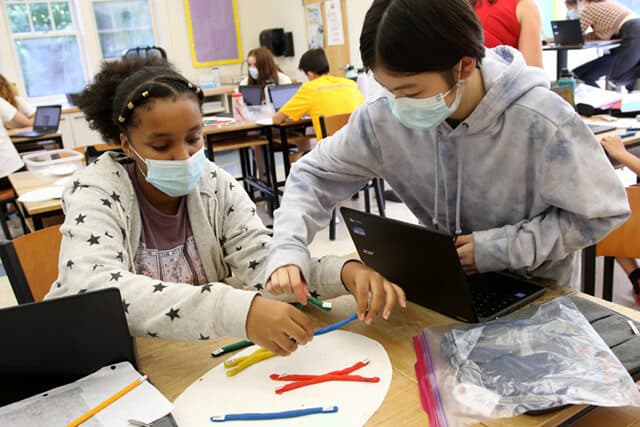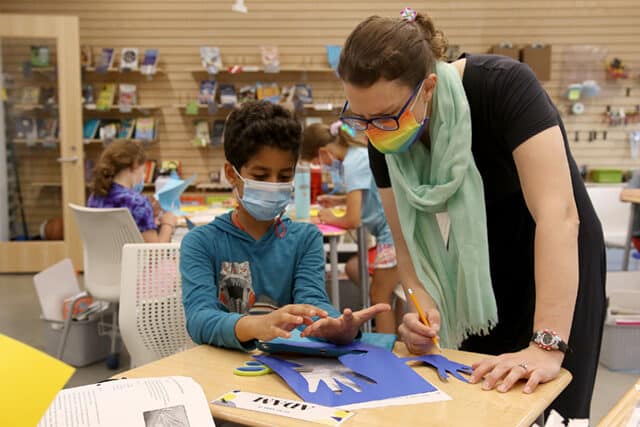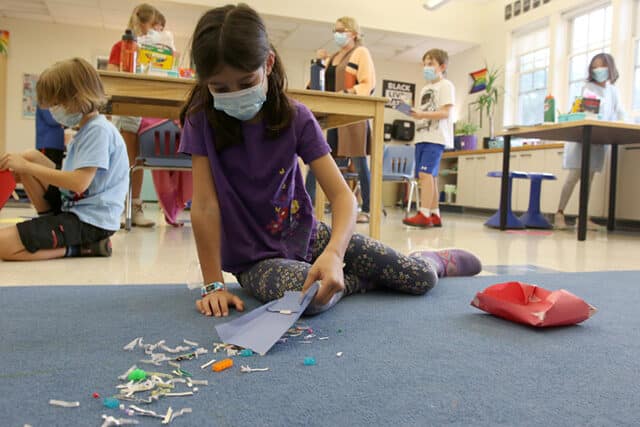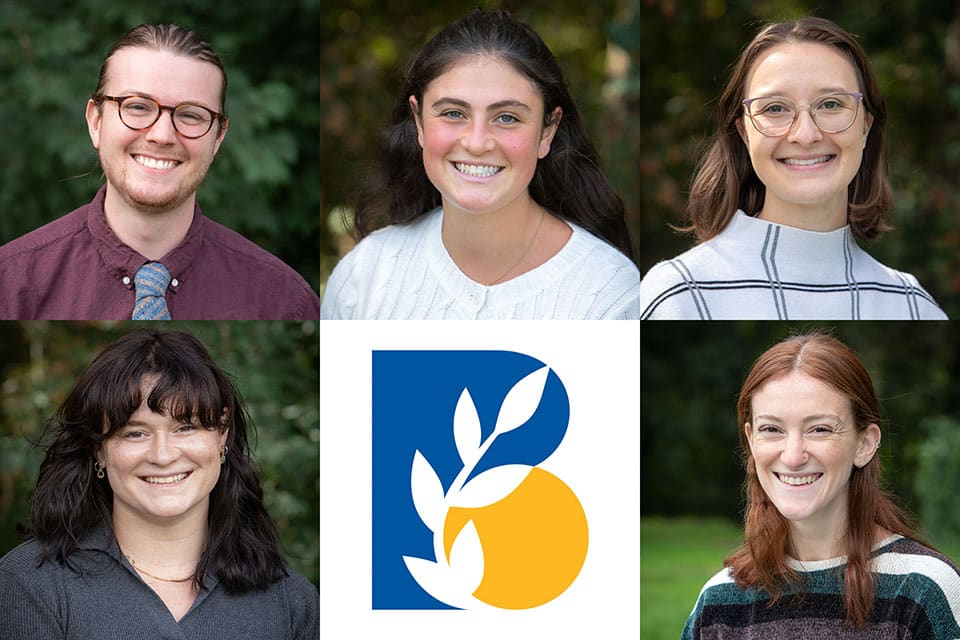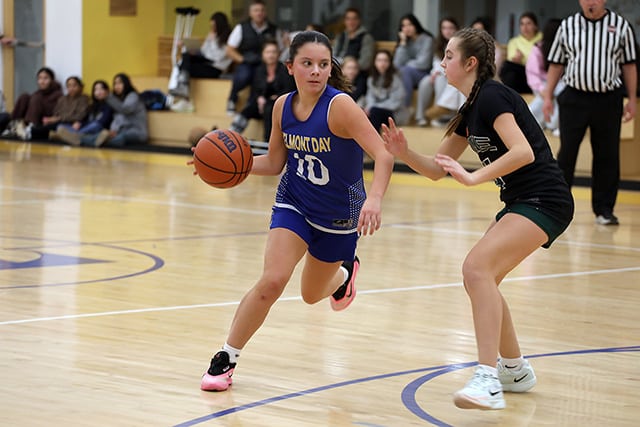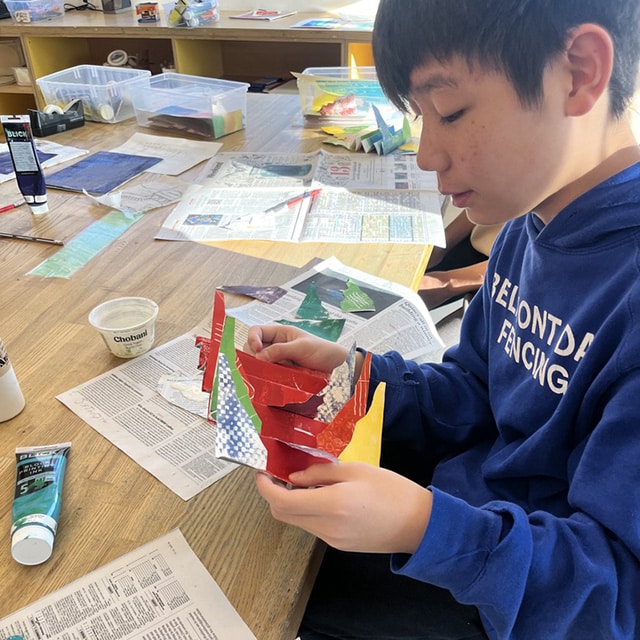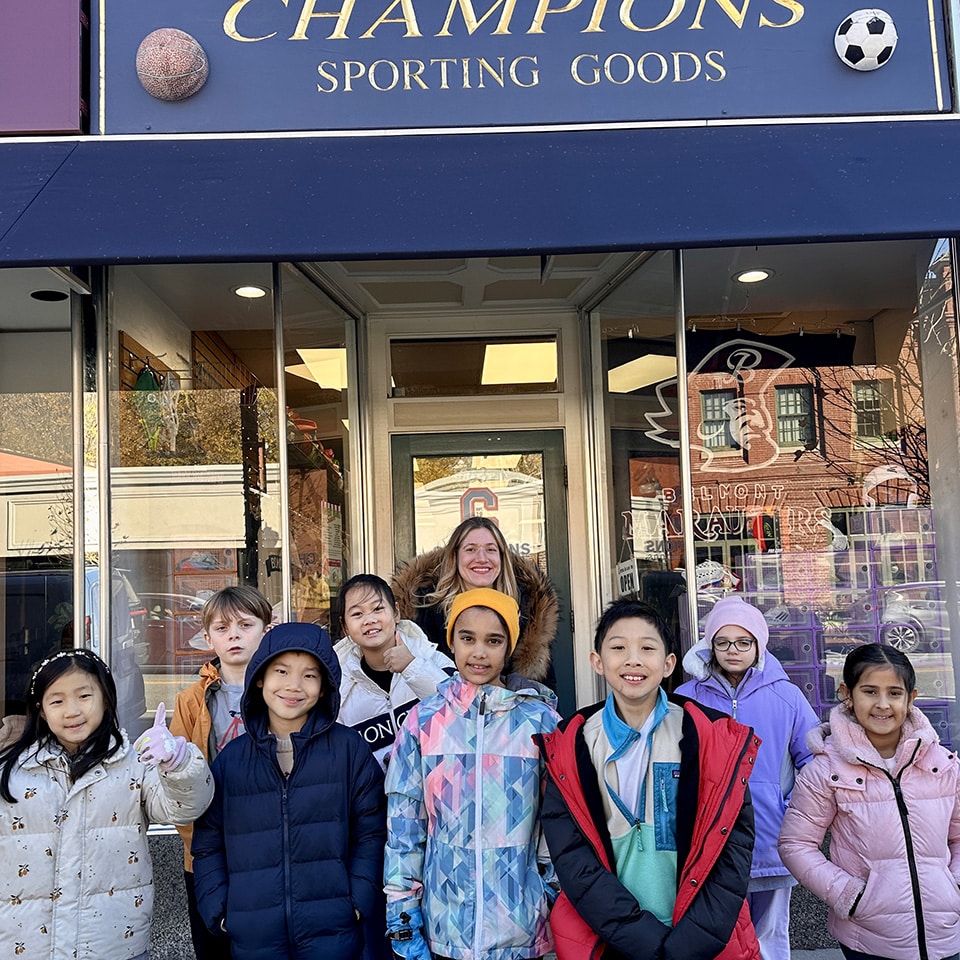Eighth Grade Studies Cell Reproduction
Eighth grade science students have had a busy week diving into the topics of asexual reproduction, sexual reproduction, and the process of meiosis through a series of discussions, videos, and comparisons to what they learned about mitosis in seventh grade. Students ended the week by completing a hands-on activity that allowed them to better understand the steps of the process of meiosis and how body cells can be turned into sex cells. Students were able to model the concept of crossing over and understand how this important process is in ensuring that at the end of meiosis the cells that are made have a different genetic code than those of the parent cells. In the coming weeks, we will expand on this concept to look at basic Mendelian genetics, learn how traits carried on chromosomes are passed from parents to offspring, and connect the concept of probability to how genetic information is distributed.
– Sandra Trentowski, grades 7 &8 science teacher
All Hands In For This Fifth Grade Anatomy Lesson
Fifth graders begin their year-long study of the human body in science class by learning about the skeletal system. Students learn the names of the major bones in the human skeleton, and how the bones work together with muscles and tendons to allow us to move. This week fifth graders use straws, string, card stock paper, and tape to make a moving model of the human hand. The string represents the tendons in our hands; when you pull the string, the model fingers bend, just like our real fingers. Pulling on the string simulates our muscles pulling on our tendons and moving our bones!
– Emma Nairn, grade 5 science and math teacher
PE Update: September Is a Powered-Up Month!
September brings a lot of energy to campus, whether it is nervous, excited, or focused energy (or often, a combination of all three). In physical education, we like to start the year by channeling that energy into games and activities that allow us to use our bodies and minds in ways that are dynamic and cooperative and stress locomotor movement, especially in our younger learners. Thus we’ve begun the year with obstacle courses, parkour, group games, and rock, paper, scissors problem-solving in pre-kindergarten to grade 3.
Seeing our students hopping through hula hoops to get to a rock-paper-scissors showdown, navigate the hula wall ring of fire, and working on their precision jumps and balance is a great reminder of all that we are capable of, both as individuals and as a community. One of the earliest lessons each year is that in order to optimize our time together and our personal performances we need to work together, whether that means helping one another navigate over the lava in “Mission Impossible,” or tossing a ball through a hula hoop with a couple of partners. And of course, we always leave space for our end-of-class shout-outs, to bring a little shine to those moments that stood out.
– Alex Tzelnic, physical education teacher
Third Grade Cleans Up On STEM Lesson
Third graders spent time this week learning about the importance of having a growth mindset. They read two books, Your Fantastic Elastic Brain and The Girl Who Never Made Mistakes. Then they were given a STEM challenge: design a broom and dustpan using only popsicle sticks, pipe cleaners, tape, and construction paper. Students worked together to plan, build, and test their creations and then used a growth mindset to figure out how they could improve on their initial design.
– Larissa Rochford ’93, grade 3 teacher
Describing What Makes an Excellent French Student
In French, the beginning of the year is all about reviewing material from previous years and introducing new students to the class routines very intentionally. Whether playing a game, singing a song, taking risks, taking on leadership, or making collective observations of the language, we are building teams of learners that support each other. In their very first class, I asked each lower school student what, in their opinion, makes an excellent French language student. Their answers were gathered in a WordCloud, the larger words coming back the most often. It is a heartwarming glimpse into the students’ minds as we begin a new year learning a new language. Enjoy!
– Nathalie Pellenq, lower school and grade 6 French teacher
